Common Mistakes to Avoid When Applying pvc edge tape
Have you ever applied pvc edge tape only to find that the tape bubbled, had uneven edges, or had poor adhesion? These common mistakes can ruin your project and waste valuable time. Let’s explore how to avoid these pitfalls and ensure a seamless, professional finish every time.
Key Mistakes to Avoid
The most common mistakes when applying PVC edge banding include improper surface preparation, uneven application of adhesive, and using the wrong tools. Always make sure the surface is clean, smooth, and dust-free to ensure a strong bond. Apply the adhesive evenly to prevent bubbles or weak spots, and use the right tools, such as rollers, to maintain consistent pressure. Avoid rushing the process, as this can cause alignment issues or poor adhesion. Following these steps will help you achieve a professional, durable finish every time.
How to Ensure Success Every Time
Avoiding these mistakes isn’t just about knowing what to avoid; it’s about having the right tools, techniques, and clear processes. Whether you’re a seasoned pro or new to pvc edge tape, knowing the details can go a long way. Let’s dive into practical tips and proven methods to help you get perfect results every time.
Why Surface Preparation Is Critical for pvc edge tape
Have you ever applied PVC edgebanding only to find that it peeled or wouldn’t adhere properly? This problem often comes down to surface preparation. Skipping this critical step can result in a weak bond, wasted materials, and a non-durable surface. Let’s explore why surface preparation is the foundation for a successful edgebanding project.
Proper surface preparation ensures a strong bond and a smooth surface for a professional and durable result. A clean, dust-free surface allows the adhesive to bond effectively, preventing common problems like bubbling or peeling. Taking the time to sand rough edges and remove debris sets the stage for a long-lasting result. Careful surface preparation is the first step to a perfect PVC edgebanding application.

How to Prepare Surfaces Like a Pro
Achieving a seamless pvc edge tape application starts with meticulous surface preparation. Skipping this step often results in a weak bond, bubbling, or peeling, compromising the finish and durability of your project. Below, we’ll explore practical steps you can take to ensure perfect preparation.
Understanding Surface Cleanliness
A clean surface is non-negotiable. Dust, debris, and grease act as a barrier, preventing adhesives from forming a strong bond. Proper cleaning ensures durability and enhances the final appearance of the edge tape.
Contaminants | Causes | How to Fix
- Dust and Debris | Weak bond, uneven surface | Wipe with a microfiber cloth or vacuum thoroughly.
- Grease | Adhesive not bonding properly | Clean with isopropyl alcohol or degreaser.
For more in-depth cleaning techniques, see this guide from Adhesives.org for detailed insights on surface preparation for adhesives.
The Role of Sanding in Bonding
Sanding smooths out imperfections and removes old adhesive residue that can affect bonding. Use medium-grit sandpaper for rough edges and fine-grit sandpaper for buffing. Always clean the surface after sanding to remove any remaining dust.
Tools | Purpose | Best Practices
- Medium Sandpaper | Removes rough spots, residue | Sand evenly without excessive pressure.
- Fine Sandpaper | Polishes surface for bonding | For final touches.
Humidity and Temperature: Hidden Factors
Excessive moisture or extreme temperatures can affect the adhesive’s ability to bond. Ensure the surface is completely dry and work in a temperature-stable environment (20-30°C is ideal).
Factors | Potential issues | How to mitigate
- Moisture | Weakens bond strength | Dry surface thoroughly before applying adhesive.
- High temperatures | Accelerate adhesive curing | Store and work in a temperature-controlled space.
Perform a final inspection
Before applying PVC edge tape, check for residual debris, rough spots, or inconsistencies. Perform a quick bond test on a small section to confirm the surface has been properly prepared.
Check items | Why it’s important | What to look out for
- Surface smoothness | Prevents uneven application | Check for rough edges or dents.
- Cleanliness | Ensure maximum adhesion | Ensure no dust or grease remains.
- Adhesion testing | Confirm adhesive readiness | Test adhesion on a small section.
By following these steps and leveraging the additional insights in the linked guide, you can confidently prepare surfaces for PVC edge tape. Proper preparation not only increases durability, but also ensures a professional finish that adds value to your work.
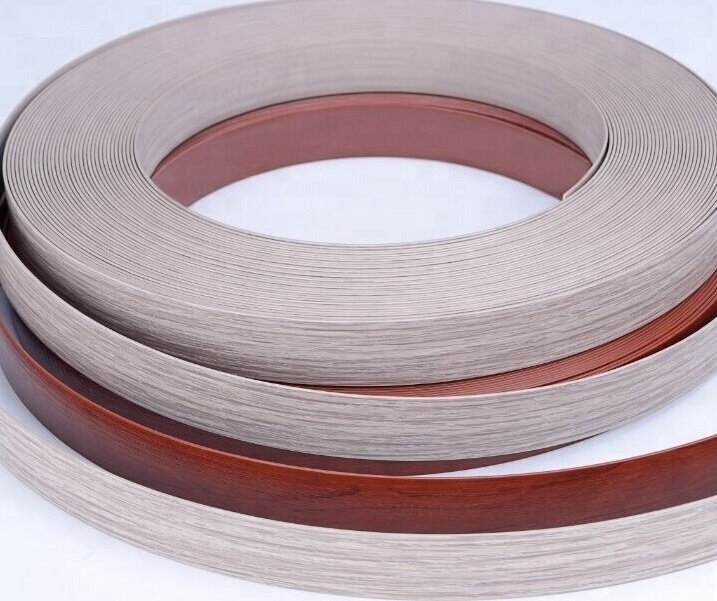
How Adhesive Application Affects Results
Have you ever struggled with edge tape not sticking or looking uneven? The way you apply adhesive can make or break your project. Even a small mistake in application can result in bubbles, a weak bond, or peeling edges. Let’s explore whyIt is critical to perform this step correctly.
The application of adhesive directly determines the strength and durability of your PVC edgebanding. Even distribution ensures a smooth, bubble-free surface, while using the right type of adhesive ensures compatibility with the material. By applying adhesive evenly and precisely, you can create a lasting bond and achieve professional results every time.
Tips for Perfect Adhesive Application
Adhesive application is a critical step in achieving perfect PVC edgebanding. From choosing the right adhesive to precise application, every detail counts to ensure durability and professional results. Below, we’ll explore how to improve your technique for the best results.
Choose the Right Application Tool
The tool you use can make or break the adhesive application process. The right tool ensures even distribution and a strong bond, minimizing common problems like bubbles or weak spots.
Tool | Purpose | Best Practices
- Hand Roller | Ensures even distribution of adhesive | Rolls continuously along the edge with steady pressure.
- Glue Applicator | Ensures precise placement of adhesive | Apply a thin, even layer to avoid over-application or gaps.
- Edge Bander | Provides a uniform bond | Ideal for large-scale applications where consistency is required.
Proper use of these tools will not only improve edgebanding quality, but it will also save time and reduce material waste.
Timing is Everything
Adhesives often require a specific curing time to achieve maximum bond strength. Rushing the process can compromise the bond, causing the edge to peel or become weak. Always check the adhesive manufacturer’s recommendations for drying and curing times.
Avoid Common Mistakes
Mistakes such as uneven application, insufficient adhesive, or improper curing can be easily avoided with proper preparation and attention to detail. For example, using too much adhesive can lead to messy results and material waste, while too little adhesive can weaken the bond.
By focusing on the right tools, proper timing, and avoiding common mistakes, you can ensure your PVC edgebanding project is a success. A little attention to detail goes a long way in creating a seamless and durable surface.
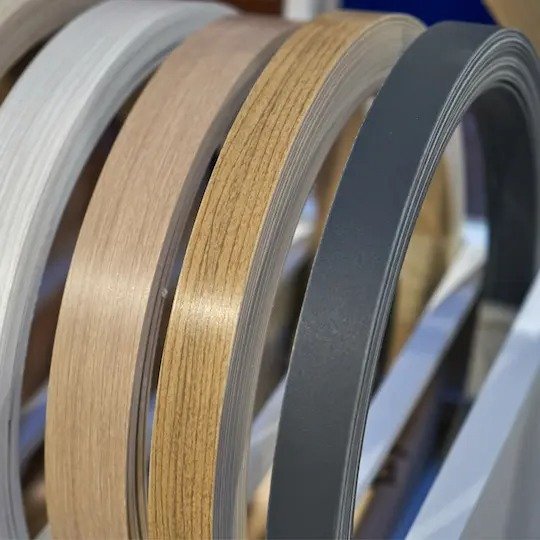
What Tools Help Avoid PVC Edgebanding Mistakes?
Have you ever been frustrated by bubbles, misalignment, or weak bonds when applying pvc edge tape? Often, the difference between a perfect finish and a flawed one is the tools you use. The right equipment will not only make the process easier, but it will also ensure precise and professional results. Let’s explore which tools can transform your edgebanding process.
Essential Tools for Perfect PVC Edge banding
The right tools can make a big difference in the quality of your PVC edgebanding application. From ensuring precise alignment to applying consistent pressure, having the right equipment can streamline the process and improve the durability and appearance of your work. Let’s dive into the key tools to avoid common mistakes.
Key Tools for Professional Finishes
Each tool in the edgebanding process has a specific purpose. Using the right equipment ensures efficiency and eliminates issues like bubbling, misalignment, or weak bonds.
Tools | Function | Best Practices
- Hand Roller | Apply even pressure | Roll firmly along the edge to remove air bubbles.
- Glue Applicator | Ensures consistent adhesive distribution | Applies a thin, even layer of adhesive.
- Edge Bander | Provides a uniform bond | Great for large-scale applications.
Maximize Efficiency with the Right Tools
Hand Roller is essential for smaller projects, providing consistent pressure to prevent bubbles and gaps. For adhesive applications, precision applicators ensure even distribution of glue without over-application, avoiding messes and ensuring a strong bond. Large projects benefit from edgebanding machines, which automate the process and provide consistent results.
Avoid Common Mistakes
Using the wrong tool often leads to common problems like uneven pressure, misalignment, and weak bonds. For professional results, always choose tools designed for edgebanding and follow the manufacturer’s recommendations.
For more detailed information on edgebanding tools and techniques, see our comprehensive guide to edgebanding essentials.
Having the right tools and understanding their uses can help you avoid common mistakes and ensure your PVC edgebanding project is durable and professionally finished. A small investment in quality equipment can significantly improve your results.
How Misalignment Can Ruin Your PVC Edgebanding Project
Have you ever finished applying pvc edge tape and realized that the edges didn’t align perfectly? It may start out as a slight misalignment, but it can quickly become an eyesore and detract from the professional quality of your work. It’s one of the most common mistakes that can affect both aesthetics and durability. Let’s explore why alignment is so important.
Misalignment during the PVC edge banding process can result in visible gaps, which can cause problems with your pvc edge tape project.Uneven edges and weak adhesion. These defects not only affect the appearance of the final product, but also reduce its durability. Proper alignment ensures seamless edges, smooth surfaces, and long-lasting results. Attention to detail during the application process is key to avoiding these issues.
Effects of Misalignment on pvc edge tape
Misalignment not only creates visual defects; it also compromises the structural integrity of the edge tape. Uneven edges are more likely to peel, chip, or damage over time. Below, we’ll break down the key factors that cause misalignment and how to avoid them.
Tools and Techniques for Proper Alignment
The risk of misalignment can be significantly reduced by using the right tools and techniques. Here are some basic tools and best practices:
Tools | Purpose | Best Practices
- Edge Trimmer | Ensures clean, precise cuts | Trims excess tape evenly for a smooth edge.
- Manual or automatic press | Maintains consistent pressure | Used to hold the tape firmly to the surface.
- Alignment Jig | Holds the tape in place during application | Carefully positioned to ensure accurate placement.
Common Causes of Misalignment
- Improper Positioning: Misaligned tape can result in uneven overlaps or gaps.
- Inconsistent pressure: Uneven pressure can cause the tape to shift during application.
- Rushing the process: Skipping alignment checks can lead to mistakes that are difficult to fix later.
Ensure lasting results
To prevent misalignment, take your time during application and double-check positioning before final bonding. Using an alignment jig or guide can help achieve precision, especially for larger projects or complex edges.
For more tips on avoiding misalignment in edge taping projects, see “Best Practices for Edge Taping” in this guide.
Proper alignment not only ensures a polished and professional look, it also increases the durability of your PVC edge tape. With the right tools, techniques, and attention to detail, you can avoid this common mistake and achieve perfect results every time.
Common causes of bubbles and gaps in edge tape
Have you ever noticed bubbles or gaps ruining the look of edge tape? These issues can make even a well-designed project look unprofessional. Understanding the causes is key to achieving a flawless, durable finish.
Bubbles and gaps in edge tape are often caused by uneven application of adhesive, improper surface preparation, and insufficient pressure during bonding. Dust or grease on the surface, applying too much or too little adhesive, and failing to press down the tape evenly can all cause these problems. Accurately addressing these factors and using the right tools can ensure a smooth, professional finish every time.
Addressing Bubbles and Gaps in Edge Tape
To prevent bubbles and gaps, focus on preparation, adhesive application, and consistent pressure. Each step is critical to ensuring a seamless bond.
Key Steps to Eliminating Bubbles and Gaps
Problem | Cause | Solution
- Bubbles | Uneven adhesive application | Use a roller to evenly distribute adhesive.
- Gaps | Inadequate adhesive coverage | Ensure full coverage around the edges.
- Poor adhesion | Dust or grease on the surface | Clean thoroughly with isopropyl alcohol.
- Weak pressure | Inconsistent or insufficient pressure | Use a hand roller or press to apply steady pressure.
Helpful tips for perfect results
- Clean the surface thoroughly: Dust, grease, and debris are the main causes of poor adhesion. Always clean the surface with a degreaser to ensure a strong bond.
- Apply adhesive evenly: Uneven adhesive application can cause bubbles. Use a high-quality applicator for a smooth, even coat.
- Use consistent pressure: After applying the tape, use a roller or press to eliminate air pockets and ensure a strong bond. This step is critical to preventing gaps and bubbles.
By following these best practices, you can eliminate bubbles and gaps, ensuring your PVC edge tape looks flawless and lasts for years. Attention to small details is essential to achieving professional-grade results.
How to Ensure Your Edge Tape Lasts
Have you ever applied edge tape only to find that it peels or breaks after a short period of time? Durability is key for professionals to ensure lasting results that stand up to daily wear and tear. The secret lies in mastering a few basic steps to ensure a strong bond and perfectly maintained edges.
Ensuring your edge tape lasts depends on proper surface preparation, even application of adhesive, and consistent pressure during the bonding process. A clean surface, high-quality adhesive, and the right tools are essential to establishing a strong bond. Additionally, allowing adequate curing time ensures that the edge tape reaches maximum strength, preventing peeling or damage over time.
Strategies for Long-Lasting Edge Tape
Long-Lasting edge tape starts with attention to detail at every step, from surface preparation to final application. Each stage enhances the bond strength and the overall life of the edge tape
Importance of the Right Adhesive and Tools
Using the right adhesive and tools ensures that the bond is strong enough to withstand everyday use. The adhesive should be matched to the substrate and environmental conditions, while tools such as rollers and presses ensure consistent application.
Key Factors | Impact on Durability | Best Practices
- Adhesive Selection | Ensure Compatibility and Strength | Use high-performance adhesives such as PUR for demanding applications.
- Surface Preparation | Prevent Weak Bonds | Thoroughly Clean and Sand Rough Edges.
- Constant Pressure | Eliminate Air Pockets | Use a Hand Roller or Even Pressure.
- Cure Time: A Critical Step
Allowing the adhesive to fully cure is critical for long-term durability. Curing gives the bond the strength it needs to resist peeling, especially in high-humidity or high-use environments. Follow the manufacturer’s instructions for best results.
Avoid Common Mistakes
Skipping surface cleaning or rushing the curing process can cause the edge tape to fail prematurely. Investing time in these critical steps avoids rework and ensures a professional finish.
For more detailed advice on adhesives and their application, see the comprehensive guide on Adhesives.org.
By focusing on preparation, precision, and the right materials, you can create edge tape that will stand the test of time, improving the durability and appearance of your project.
Conclusion
Successful application of PVC edge tape depends on avoiding common mistakes and following best practices. Proper surface preparation, even adhesive application, and consistent pressure ensure a perfectly durable surface. By using the right tools and techniques and paying attention to detail, you can achieve professional results every time. Remember, taking extra care during the process goes a long way in creating a long-lasting edge tape effect.









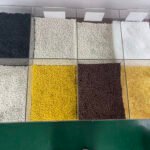





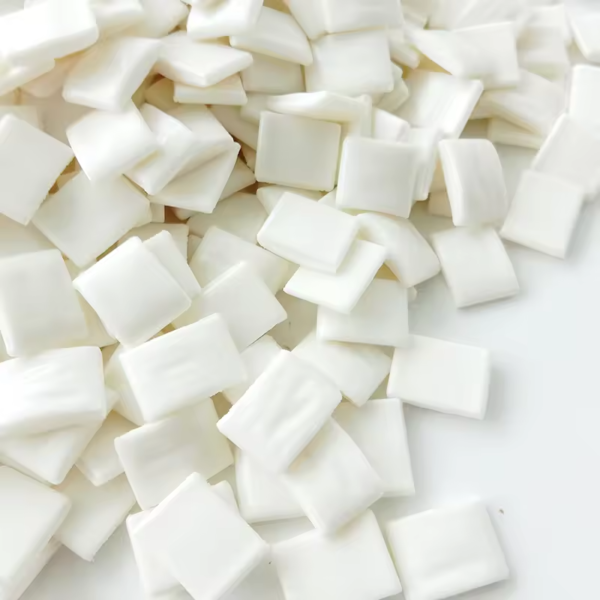

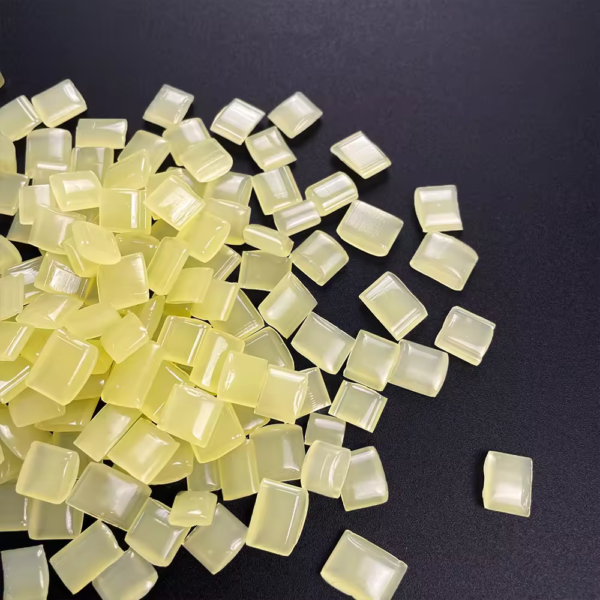







Leave a Reply